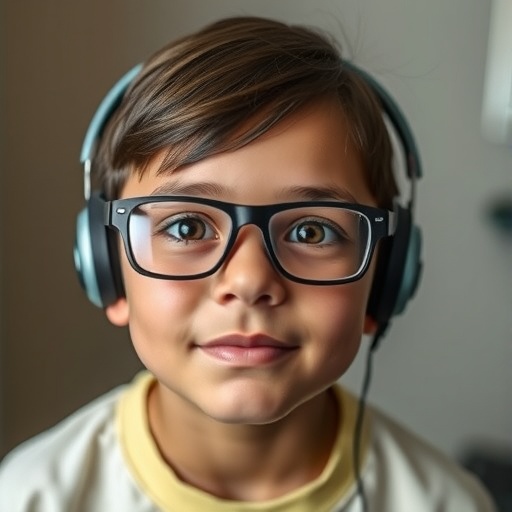Emerging research led by Tara Alvarez, a distinguished professor of biomedical engineering at the New Jersey Institute of Technology (NJIT), is shedding new light on the treatment of vision disorders associated with concussion, a common yet often debilitating consequence of head trauma. This multi-institutional study meticulously explores convergence insufficiency (CI) and accommodation insufficiency (AI), two prevalent binocular vision dysfunctions that persist in approximately half of adolescents and young adults enduring prolonged post-concussion symptoms. These conditions manifest through double and blurred vision, headaches, and cognitive challenges such as difficulty concentrating, severely affecting academic performance and everyday activities.
CI, characterized by an inability of the eye muscles to properly coordinate for near focus, causes images to appear doubled and can hinder tasks demanding near vision such as reading and screen use. AI, on the other hand, leads to blurry vision through the insufficiency of the eye’s accommodative mechanism — its ability to maintain clear focus on objects at varying distances. Historically, the treatment landscape for these visual impairments post-concussion has been murky, with little consensus or standardized protocols to guide clinical decisions. This gap significantly challenges physicians who must often rely on subjective symptom reports rather than objective markers when determining safe timelines for return to sports, work, or school.
The research, recently published in the British Journal of Sports Medicine, represents a significant breakthrough as it establishes an evidence-based approach to effective therapy for these vision disorders. Alvarez and her interdisciplinary team, including engineers, optometrists, biostatisticians, and sports medicine physicians, conducted a randomized clinical trial involving 106 patients aged 11 to 25 with a history of one or more concussions and ongoing symptoms lasting between one and six months. The treatment group underwent a 12-week course of targeted vision therapy designed to enhance eye muscle coordination and accommodation, while a control group was monitored to observe natural symptom resolution.
Remarkably, nearly 90% of patients receiving therapy achieved normal visual function by the study’s conclusion, in stark contrast to the under 10% recovery rate seen in the observation group. Those who exhibited slower progress were administered an additional four weeks of treatment, underscoring the therapy’s adaptability. These findings underscore the efficacy and necessity of early intervention, as delaying treatment can prolong disruptions to critical cognitive and daily functions. Vision therapy’s mechanisms involve structured exercises to stimulate and retrain the affected ocular systems, fostering neurological plasticity and restoring efficient eye movement and focusing abilities.
Dr. Mitchell Scheiman, the study’s lead optometrist and senior associate dean of research at Drexel University’s Pennsylvania College of Optometry, emphasized the life-altering impact of untreated visual sequelae post-concussion. “Six weeks might seem brief, but for patients struggling with persistent symptoms, this timeframe can represent an extended period of life interruption,” he remarked. The study also highlights the utility of therapeutic paradigms long employed in non-concussed CI patients, demonstrating their robust applicability in the context of brain injury—a critical advancement for designing standardized therapeutic interventions.
The clinical component was supported by researchers Christina Master, M.D., from the Minds Matter Concussion Program at Children’s Hospital of Philadelphia, and Arlene Goodman, M.D., from the Somerset Pediatric Group. Both physicians corroborate the widespread prevalence of convergence insufficiency among concussion patients and lament the scarcity and high out-of-pocket costs of vision therapy, which often leaves many individuals with unresolved symptoms. Their clinical observations mirror the trial’s outcomes, reinforcing the urgent need for broader access and insurance coverage for vision rehabilitation post-concussion.
Beyond behavioral assessments, the research incorporated advanced neuroimaging techniques, including functional magnetic resonance imaging (fMRI), to elucidate cerebral changes accompanying symptomatic improvement. By measuring regional cerebral blood oxygenation, the team quantified metabolic activity corresponding to ocular motor control and processing speed. Complementary neural analyses conducted by specialists at Rutgers University and NJIT evaluated neuronal firing patterns, recruitment of ancillary neuronal populations, and inter-neuronal connectivity enhancements, collectively indicating that vision therapy induces neuroplastic adaptations that underpin symptom resolution.
These neurophysiological insights represent a pioneering contribution to our understanding of how targeted rehabilitation reshapes brain function after trauma. Alvarez and Scheiman’s forthcoming presentation at the American Academy of Optometry annual meeting is anticipated to deepen scientific discourse on the neural mechanisms modulated by vergence and accommodative therapy and promote clinical translation of these insights.
Looking to the future, Alvarez is spearheading the development of a virtual reality (VR) vision therapy platform. This innovative technology aims to remotely deliver personalized eye movement training through immersive, game-like environments, with real-time monitoring and scoring to support clinicians’ decisions regarding safe return-to-activity timing. Such an approach addresses significant barriers to access, including geographic limitations and scheduling conflicts, while enhancing patient engagement and compliance through appealing interactive formats.
This translational research not only provides concrete, high-quality evidence supporting vision rehabilitation for concussion-related visual impairments but also heralds a paradigm shift toward accessible, technologically enabled care. By refining diagnostic precision and therapeutic efficacy, it promises to improve quality of life for millions afflicted by lingering post-concussion symptoms and establish a new benchmark in sports medicine and neurorehabilitation.
Media Contact:
Deric Raymond
New Jersey Institute of Technology
draymond@njit.edu
Office: 973-642-7042
Subject of Research: Concussion-related symptomatic convergence insufficiency and accommodation insufficiency treatment using vergence/accommodative therapy.
Article Title: CONCUSS randomised clinical trial of vergence/accommodative therapy for concussion-related symptomatic convergence insufficiency.
Web References:
DOI Link to Article
Image Credits: New Jersey Institute of Technology
Keywords: Brain injuries, Traumatic injury, Vision, Brain stimulation, Physical rehabilitation, Neuroscience, Human brain, Neuroplasticity, Sports medicine




